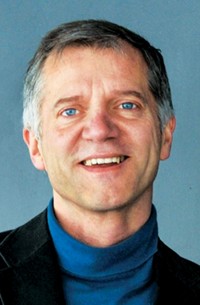Advertisement
Grab your lab coat. Let's get started
Welcome!
Welcome!
Create an account below to get 6 C&EN articles per month, receive newsletters and more - all free.
It seems this is your first time logging in online. Please enter the following information to continue.
As an ACS member you automatically get access to this site. All we need is few more details to create your reading experience.
Not you? Sign in with a different account.
Not you? Sign in with a different account.
ERROR 1
ERROR 1
ERROR 2
ERROR 2
ERROR 2
ERROR 2
ERROR 2
Password and Confirm password must match.
If you have an ACS member number, please enter it here so we can link this account to your membership. (optional)
ERROR 2
ACS values your privacy. By submitting your information, you are gaining access to C&EN and subscribing to our weekly newsletter. We use the information you provide to make your reading experience better, and we will never sell your data to third party members.
People
ACS Award In Analytical Chemistry
by Celia Henry Arnaud
January 12, 2015
| A version of this story appeared in
Volume 93, Issue 2
Sponsored by Battelle Memorial Institute
Modern proteomics owes much to John R. Yates III. For his contributions to that field, Yates, the Ernest W. Hahn Professor of Chemical Physiology & Molecular & Cellular Neurobiology at Scripps Research Institute, in La Jolla, Calif., is receiving the ACS Award in Analytical Chemistry.
In 1994, Yates reported a method to automatically match experimental tandem mass spectra of peptides to the predicted spectra of sequences in a protein database. In the same paper, he and his coworkers used such database searches to identify proteins in a mixture. Yates dubbed the new approach “shotgun proteomics,” and it remains the dominant approach for analyzing protein mixtures.
The algorithms Yates devised form the basis of the computer program SEQUEST. “Proteomics as we know it wouldn’t exist without such software,” says Robert T. Kennedy, the Hobart H. Willard Distinguished University Professor of Chemistry at the University of Michigan, Ann Arbor.
Yates combined shotgun proteomics with multidimensional chromatography to form the approach known as MudPIT, which stands for multidimensional protein identification technology. In MudPIT, complex mixtures of peptides are separated by ion-exchange chromatography and reversed-phase liquid chromatography before being analyzed by tandem mass spectrometry. “John has managed to stay as the leader of this incredibly competitive field through continuous advances in software, separations, and quantification,” Kennedy says.
Although much of Yates’s work focuses on method development, he has also applied proteomics to basic biology and disease. For example, Yates has used proteomic methods to study proteins that bind to aberrant CFTR, the receptor involved in cystic fibrosis.
“From an entirely strategic and intentional approach, John has provided clear and actionable knowledge of how proteins are misrecruited to a flawed CFTR protein,” says Neil L. Kelleher, the Walter & Mary Elizabeth Glass Professor in the Life Sciences and director of the Proteomics Center of Excellence at Northwestern University. “As a result, new therapeutic paths are not only visible but are being pursued aggressively to improve the lives of those with cystic fibrosis.”
Yates, 56, received his bachelor’s degree in zoology and his master’s degree in chemistry from the University of Maine, Orono, in 1980 and 1983, respectively. While working on his master’s degree, he became interested in mass spectrometry. He followed his newfound passion to doctoral studies in Donald F. Hunt’s lab at the University of Virginia. He received his Ph.D. in 1987.
Following a stint as a postdoctoral research fellow in Leroy Hood’s lab at California Institute of Technology, Yates joined the faculty at the University of Washington School of Medicine in 1992 as an assistant professor in the department of molecular biotechnology. He was promoted to associate professor in 1998. Yates moved to Scripps in 2000 as an associate professor of cell biology. The following year he was promoted to full professor.
Yates has received numerous awards for his proteomics work, including the Biemann Medal from the American Society for Mass Spectrometry, the Distinguished Achievement Award in Proteomic Sciences from the Human Proteome Organization, and the Christian B. Anfinsen Award from the Protein Society.
Yates will present his award address before the Division of Analytical Chemistry.





Join the conversation
Contact the reporter
Submit a Letter to the Editor for publication
Engage with us on Twitter